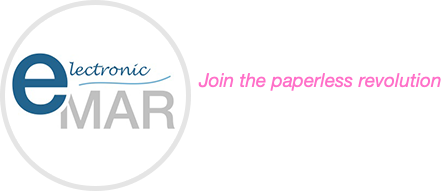The healthcare sector now uses several digital systems, and among the most important is the electronic Medication Administration Record (eMAR). eMAR systems offer plenty of benefits—but to get the best out of them, staff need the right training. Before starting any eMAR training, it’s essential to assess the team’s baseline competencies. Nurses and care staff vary in their experience with technology, so it’s important to understand where they’re starting from. Let’s look at the key skills to check before introducing eMAR.
Basic computer and digital literacy
One of the first areas to assess is basic digital literacy. Staff should feel confident using computers and similar tools. They need to know how to log in securely and protect sensitive information, especially as eMAR systems handle confidential patient data.
Staff also need to understand operating systems with ease and enter data quickly and accurately. Since eMAR platforms usually run in the cloud, staff should also understand how to use the internet and email for work-related tasks. Having these digital basics in place helps the training go more smoothly and improves confidence right from the start.
Understanding of medication administration procedures
It’s not just about digital skills. Staff also need a solid grounding in medication administration. Even though eMAR systems streamline many tasks, the underlying principles of medication safety still apply. Before starting training, nurses should understand how to manage medication schedules and dosages. They should also know how to identify allergies and potential drug interactions. Those who’ve worked with traditional MAR systems will already know how medication is recorded and tracked. This experience makes the move to a digital system less daunting. Many features of eMAR reflect familiar processes—just with more accuracy and automation.
Familiarity with paper-based MAR systems
Many nurses and care staff still use paper MARs in their daily work. So, before switching to eMAR, it helps to see how well the team understands the traditional method. They should know how to fill in paper charts, follow proper documentation steps, and spot any errors that may come up.
Being able to spot and fix mistakes is still vital, even with a digital system. Although eMAR reduces human error, staff who know how to handle issues on paper will find it easier to work with the digital version. This existing knowledge makes it easier to understand how eMAR systems work and speeds up the learning process.
Adaptability and willingness to learn
Another important factor is adaptability. The success of an eMAR rollout depends on how open the team is to using new technology. Staff should feel ready to take on fresh challenges and show a positive attitude towards learning.
The move to eMAR can feel like a big step, but a willingness to learn makes all the difference. Whether through online training or face-to-face sessions, staff should feel comfortable with learning in different ways. eMAR systems also change over time, so the ability to keep up with updates helps teams make the most of the system.
Before training begins, it’s crucial to assess a team’s skills in these key areas. Knowing their starting point helps tailor the training to suit their needs. This builds confidence and ensures the team can use eMAR effectively to provide safe, efficient, and high-quality care.







